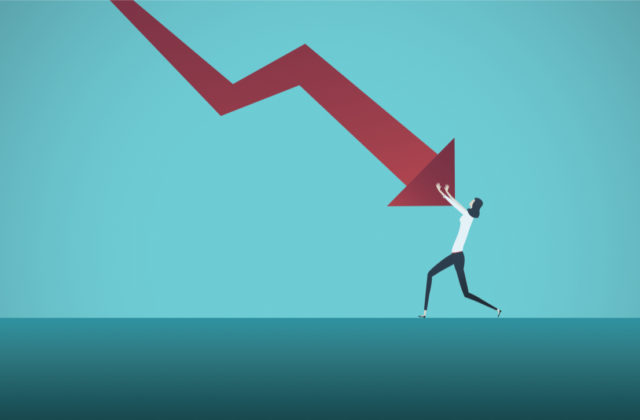Aug 26, 2019
If a recession comes, is your supply chain ready?

It’s easy to look at stock market volatility and begin to wonder about the health of the economy. While it’s always worth remembering that indexes like the Dow Jones or the FTSE aren’t truly representative of the whole economy, there are some other concerning factors that indicate a recession may be looming.
Take a look at just some of the indicators that should give pause:
- The yield on the benchmark 10-year Treasury note in the USA broke below the 2-year rate. Known as a “yield curve inversion,” this is perhaps the most reliable indicator of an oncoming recession that exists in the modern economy.
- China’s growth rate has slowed significantly, and the ongoing trade war with the USA adds volatility
- Trade disputes with Japan and South Korea, placing Japan in a possible recession.
- The challenges of Brexit continue to pile up, and the UK’s economy faltered in the second quarter.
- In the US, the unexpected metric of RV sales is a reliable indicator of a coming recession, and recent reports indicate RV sales are slipping.
- Germany, the world's fourth-largest market, is troubled by their slowing numbers in the second quarter.
- Argentina just experienced its worst stock market crash in decades, and Brazil and Mexico are also expected to perform poorly this year.
- The imminent fall of Eskom (South Africa’s energy supply company), with the massive R441 billion outstanding debt which the SA economy cannot afford. This threatens to put SA back into Junk status.
To top it off, the International Monetary Fund recently cut their projection for global growth down to 3.2 percent, the lowest rate since 2009, which puts all those above points into a numerical reality.
There’s no need to be alarmist, of course. It's unlikely that the next recession, whenever it may happen, will be as bad as the previous recession. After about a decade of consistent growth, a downturn is to be expected and in some ways may be necessary to deflate unproven bubbles that may have popped up across the global economy.
But with all that as context, let's focus on your business: when a recession hits, will you be prepared?
In boom times, growth comes much easier to firms across the spectrum. In fact, your weakest and most outdated processes can seem more viable than they actually are as a result of overall growth. Perhaps your business has grown tremendously while relying on spreadsheets to keep things organized. That doesn’t mean a spreadsheet is the right tool, necessarily, or that you couldn’t have become more profitable with better tools over that period. The tools you used seemed to work, so you kept using them.
Speaking to a supply chain perspective, companies need to work to make their processes as agile as possible. Slow reaction can mean the demise of your business. Margins tend to be tight, and any kinks in your supply chain can cause major headaches and torpedo your profits. Having the right tools in place to manage your supply chain makes you more agile.
The natural process is to match supply with demand by utilizing sales order history to forecast. However, if you’re on the brink of a recession and demand suddenly drops, you're going to be stuck with too much inventory – and you might be stuck with it for a while.
Demand-driven businesses that have visibility of demand at the point of sale will be able to identify downturns much quicker. Similar businesses relying on a spreadsheet for forecasting, meanwhile, will largely be in the dark or relying more on their intuition. (Intuition is great and necessary, by the way, but it’s just not the best or only way to run a complex business.)
To prepare, start by looking at your current planning processes – how often do you meet to plan out your forecasts? In times of economic downturn, forecast meetings should be held more regularly, preferably weekly and perhaps even daily when looking at your leading product groups, so that you can respond to volatility.
Be sure to involve Sales and Operations in these meetings to get the full picture of current and expected demand. Typically, the longer your current planning cycle, the more likely you are to find yourself with excess or obsolete stock in a recession.
With smarter planning processes in place, you can avoid costly problems like excess. Additionally, there is a human element that must be discussed. A business using the wrong tools to plan will have to cut costs in other ways in the future. That could mean ramping down important business relationships that have developed in better times, and it could even impact the size of your workforce. Nobody likes layoffs, and many businesses could actually avoid such dramatic and painful decisions by thinking ahead. Smarter planning today means a smarter business tomorrow.
At any given moment, it’s easy to find prognosticators and pundits who are predicting doom and gloom for the economy. Sometimes, they’re right. Either way, you need to be in control of your business, your data, and your supply chain. Keep a close eye on your cash flow and your transactions, and continue to work at driving performance across the sales and finance teams.
A turbulent economy doesn’t have to mean your business suffers. Strategic decisions now, while things are good, will set you up for success when the waters get choppy, no matter when that might be. Instituting best practices for managing your inventory now will keep you a step ahead.
There are always opportunities in a recession. The question is, when the next one comes, will you be swept away or will you be in control? You have to make that decision now, for the sake of your business, your colleagues, and yourself.
There’s precious little time to waste to build a better and more sustainable business. It’s time to be proactive.
Connect with NETSTOCK CIO, Craig de Kock here
Written by Craig de Kock
Craig is President of NETSTOCK USA and CIO for the Group. In 2011 Craig joined NETSTOCK and began his journey building the business from the ground up. In both roles, he is focused on the NETSTOCK customers and empowering his team in the US to make sure our customers are successful. Internally, Craig ensures we have effective systems and processes in place, to deliver great service to our customers.
